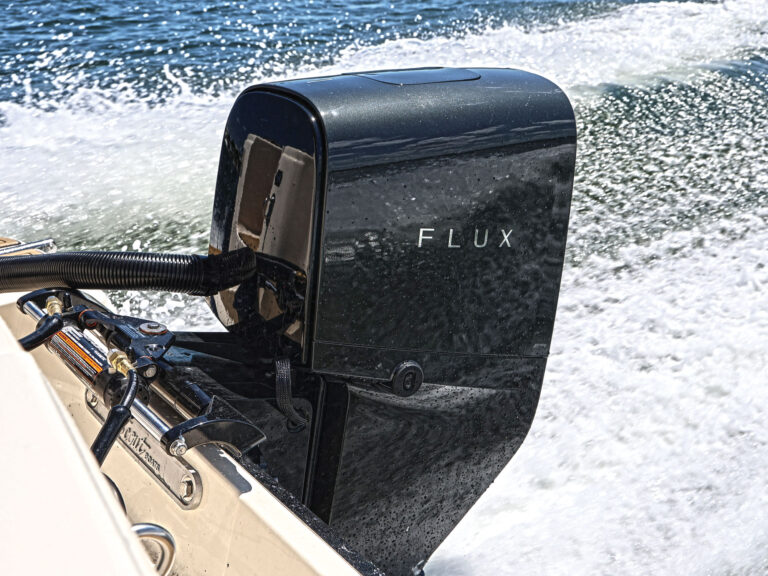You never know what kind of little breakdown a boat will throw at you, or when. This is why every boater should be able to channel his inner MacGyver, the ’80s TV hero, or Jason Bourne, the more-recent movie escape artist — guys who could, in a pinch, build or fix anything with whatever was lying around. They made it look easy, and it is — with a little imagination and some freethinking. To give you an example of creating on the fly, here’s the story of a cruise that could have been a disaster but was saved by a few clever ideas.
EDITOR’S NOTE: Yes, this was first published in 2010. But this content is,”evergreen,” as we say in the publishing business.
Delivery Boys
Mike and I were contracted by the new owner of a four-year-old express cruiser to bring it down from Annapolis, Maryland, to his home near Charleston, South Carolina. The previous owner had assured us that the boat was fully equipped and ready to go. However, when we got on board, we found that he had cleaned it out, taking everything that wasn’t bolted down and some things, like the chart plotter, that left very little. But we needed the money, so the trip and the adventure were on. Mike first tried to get the weather on his laptop but couldn’t tap into the marina’s Wi-Fi, so he rigged a kitchen-strainer antenna.
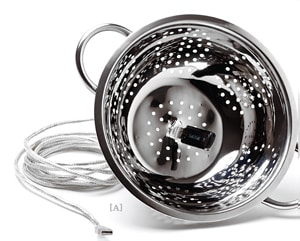
He cut a hole in the bottom of a metal strainer, put the external Wi-Fi receiver in the hole and led the USB connector/wire to the computer’s port [A]. The strainer acted like a satellite dish, focusing the signal. It doesn’t always work, but this time it did — and helped my cell phone as well.
Meanwhile, my job was to stock up the galley, but the refrigerator wasn’t working because the door’s rubber seal was missing. I thought I’d lug some ice aboard, but even that went awry when the rusty wire handle on the bucket cut my hand on the first load. So, I rigged a bucket handle from a wrench. I inserted the open ends of a long wrench under the bucket’s handle and held onto the nice, thick wrench instead of the rusty wire bale.
I still wanted the refrigerator to work and was going to buy a new seal, but there was no tape measure, so I made my measure using quarters, because each 25-cent piece is a hair under an inch in diameter — which was accurate enough. I then headed ashore to buy the seal and some hydraulic oil for the stern-drive. When I returned we found that there was no funnel for the oil and that the reservoir was almost impossible to reach. Scrounging in the galley, Mike came up with the idea for an aluminum foil funnel. you can form it into any long or convoluted shape, but it’s good for only one use.
The last problem we had before leaving was that I had forgotten my Top-Siders. Not wanting to slip and slide, I fashioned some Band-Aid boat shoes. Stick one Band-aid on the ball of the shoe’s sole, one at the heel — same as you would with broken blisters. The gauze helps keep a slippery layer of water from being trapped between the shoe and the deck. The problem was that I didn’t have extras to change them out every hour or two.
Leaks and Pains
Not trusting my seal repair on the refrigerator, Mike devised an ice cube freezer alarm using a volt/ ohm multimeter with an audible alarm. Keeping the probes separated, he placed them into salty water [B] and put the water in the freezer; the meter itself stayed outside. If the fridge died, the ice would melt, and the electrical resistance would drop enough so the meter would sense continuity between the probes — and the buzzer would sound. “I wouldn’t stake my life on it,” Mike said, “but I’ve seen it work.”
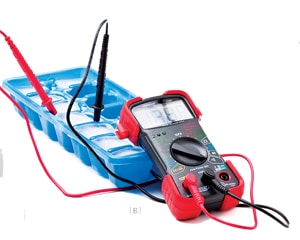
With that set, we finally got under way. It was smooth sailing too, until the engine’s overheat alarm sounded. We were losing water from the closed cooling system but couldn’t find the leak. Then Mike remembered seeing white smoke (steam) coming from the exhaust, which probably meant a leaky head gasket. as a quick fix, I tried to seal the cooling system with crushed pepper. Pour a handful into any coolant-access point, such as the plastic reservoir near the pump, and let it circulate. as the fine grains get drawn into the leaks, they (temporarily) seal them.
We topped off the system and made it another few hours until the next disaster — a cracked exhaust hose. To patch the hose, we used the classic soda can hose repair. Wrap the leaky area in a rag. Cut the ends off a soda or beer can, and cut the can lengthwise. Wrap the can around the rag and secure it with at least four small pieces of rope tied with constrictor knots for optimum leverage (duct tape doesn’t squeeze hard enough, and zip ties can melt) [C].
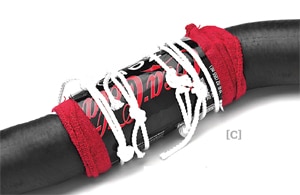
The rest of the day was uneventful until the Band-aids on my shoes came off and I slipped, spraining an ankle. To help, Mike made a vodka ice pack. He mixed 1½ cups of water with 1 cup of Stoli (but any high-proof liquor will do) in a sealed plastic bag and put it in the freezer. It doesn’t freeze solid, but it becomes a cold slush that’s a better fit for the wound.
That night at the next marina, it rained. Wouldn’t you know that the porthole over my bunk leaked? So I used an old wooden boat trick and made up some sawdust sealant. We swept up some sawdust from the marina’s woodshop, sprinkled it along the top of the leaky port and waited for the rainwater to suck the small fibers into the hidden leaks.
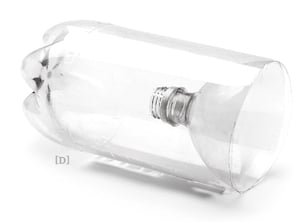
Mike wanted to fish the next day but realized he’d forgotten his lures. He’d have to use live bait, so he made a soda bottle bait trap. He cut off the top third of a plastic soda bottle, flipped the cut-off part so that the neck pointed in toward the base of the bottle, and jammed it into place [D]. Some food scraps attracted the baitfish, and they’d swim in but couldn’t figure out how to get back out.
Needing A Couple Aspirin
All was going well on day two until we anchored for lunch. a rusted shackle gave way, and we went aground. To find the lost anchor, I made soda bottle goggles. I removed the label from a clear 2-liter Diet Coke bottle. Then I cut out an oval in the side that fit my face and put some tape around the edge to make a good seal.
Naturally the VHF radio didn’t work, so, still aground, Mike figured out how to signal for help with a CD. He spotted a boat in the distance, stretched out his arm and made a “V” with his fingers. Sighting the boat between the “V,” he used his other hand to hold a CD near his face and looked at the boat through the hole in the CD. He then twisted the CD until the sun lit up the “V.” at that point, the glare from the CD could be seen from the other boat. The people in the boat responded to the signal and pulled us off.
With no major damage to speak of, we went to start the engine. Nothing. The battery’s terminals were so corroded that only a small amount of current was getting through. While my Coke terminal cleaner did the job, because the soft drink’s acid eats away the crud, Mike searched the first-aid kit to make an aspirin battery boost. He put two tablets in each of the battery’s cells. The acetylsalicylic acid in the aspirin then combined with the battery’s sulfuric acid to stimulate the electrolyte.
The engine started, the batteries were charging, and we made it into the next marina.
Arriving on the Money
Safely tied up for the night, we began troubleshooting the radio, which wasn’t easy since there was no flashlight to help inspect the wiring. So I made a spare-change flashlight. I alternately stacked six pennies and six nickels — they would act as the dissimilar metals in a battery. Between each coin I placed a small piece of paper towel soaked in seawater, which was the electrolyte. I took a white LED from a cockpit courtesy light and touched the positive and negative wire leads to each end of the stack, giving me a small yet bright source of light [E].
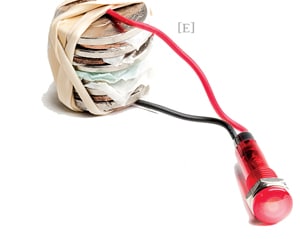
Using the light, we soon discovered that the radio’s ground wire had chafed through in two spots. The wires in Mike’s bilge alarm were too thin to be used here, so he came up with a drinking-straw wire. He rolled up aluminum foil — which is a good conductor — into a strand long enough to replace the damaged wire. He twisted the ends to make the connection [F] and covered the aluminum with a drinking straw as insulation. It wasn’t pretty and wouldn’t last, but it was better than depending on a CD and the sun to get help.
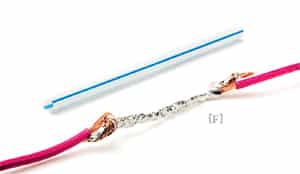
The next morning we tied up behind the new owner’s house, gave him a bill for our considerable troubles and a long list of repairs that needed to be done, and wished him luck with his new boat — he was going to need it.
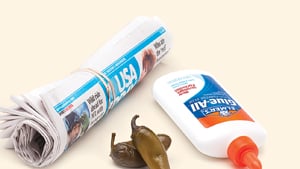
De Facto Emergency First-Aid Kit
You know the usual items that go into a first-aid kit, but WWMB(what would MacGyver bring)?
Newspaper: Ask any bum sleeping on a park bench and he’ll tell you that wadded-up newspaper stuffed under your clothes makes great insulation. Use it to warm up a hypothermic boater. Or, wrapped enough times around an arm or a leg, it also makes a good splint.
Chili Peppers: Keep your toes warm by putting chili peppers at the ends of your socks. The capsaicin oil of the pepper reacts with skin, as it does in your mouth (although not as drastically), and makes it feel warm.
Glue: Small splinters are hard to get out because they’re too tiny to grab. The best way to get rid of them is to put fast-drying glue over the spot, letting it dry, and then peeling it and the splinter away.





